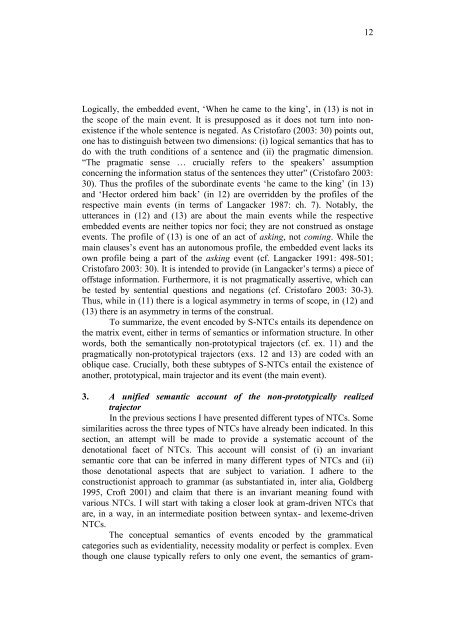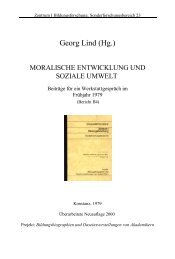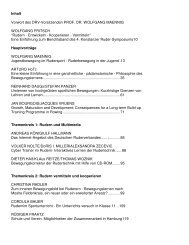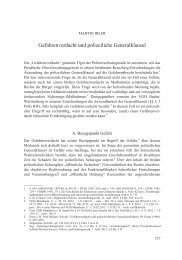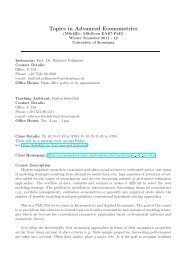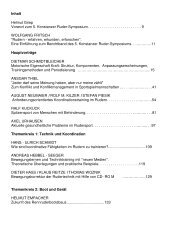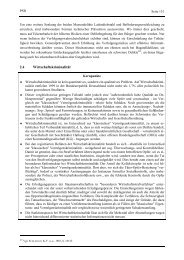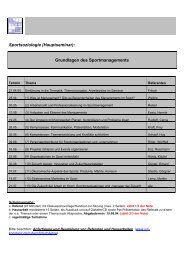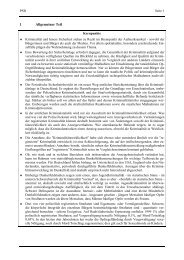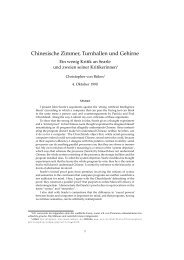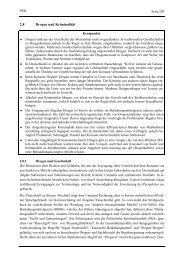Subjects and non-subjects in constructions
Subjects and non-subjects in constructions
Subjects and non-subjects in constructions
You also want an ePaper? Increase the reach of your titles
YUMPU automatically turns print PDFs into web optimized ePapers that Google loves.
12<br />
Logically, the embedded event, „When he came to the k<strong>in</strong>g‟, <strong>in</strong> (13) is not <strong>in</strong><br />
the scope of the ma<strong>in</strong> event. It is presupposed as it does not turn <strong>in</strong>to <strong>non</strong>existence<br />
if the whole sentence is negated. As Cristofaro (2003: 30) po<strong>in</strong>ts out,<br />
one has to dist<strong>in</strong>guish between two dimensions: (i) logical semantics that has to<br />
do with the truth conditions of a sentence <strong>and</strong> (ii) the pragmatic dimension.<br />
“The pragmatic sense … crucially refers to the speakers‟ assumption<br />
concern<strong>in</strong>g the <strong>in</strong>formation status of the sentences they utter” (Cristofaro 2003:<br />
30). Thus the profiles of the subord<strong>in</strong>ate events „he came to the k<strong>in</strong>g‟ (<strong>in</strong> 13)<br />
<strong>and</strong> „Hector ordered him back‟ (<strong>in</strong> 12) are overridden by the profiles of the<br />
respective ma<strong>in</strong> events (<strong>in</strong> terms of Langacker 1987: ch. 7). Notably, the<br />
utterances <strong>in</strong> (12) <strong>and</strong> (13) are about the ma<strong>in</strong> events while the respective<br />
embedded events are neither topics nor foci; they are not construed as onstage<br />
events. The profile of (13) is one of an act of ask<strong>in</strong>g, not com<strong>in</strong>g. While the<br />
ma<strong>in</strong> clauses‟s event has an autonomous profile, the embedded event lacks its<br />
own profile be<strong>in</strong>g a part of the ask<strong>in</strong>g event (cf. Langacker 1991: 498-501;<br />
Cristofaro 2003: 30). It is <strong>in</strong>tended to provide (<strong>in</strong> Langacker‟s terms) a piece of<br />
offstage <strong>in</strong>formation. Furthermore, it is not pragmatically assertive, which can<br />
be tested by sentential questions <strong>and</strong> negations (cf. Cristofaro 2003: 30-3).<br />
Thus, while <strong>in</strong> (11) there is a logical asymmetry <strong>in</strong> terms of scope, <strong>in</strong> (12) <strong>and</strong><br />
(13) there is an asymmetry <strong>in</strong> terms of the construal.<br />
To summarize, the event encoded by S-NTCs entails its dependence on<br />
the matrix event, either <strong>in</strong> terms of semantics or <strong>in</strong>formation structure. In other<br />
words, both the semantically <strong>non</strong>-prototypical trajectors (cf. ex. 11) <strong>and</strong> the<br />
pragmatically <strong>non</strong>-prototypical trajectors (exs. 12 <strong>and</strong> 13) are coded with an<br />
oblique case. Crucially, both these subtypes of S-NTCs entail the existence of<br />
another, prototypical, ma<strong>in</strong> trajector <strong>and</strong> its event (the ma<strong>in</strong> event).<br />
3. A unified semantic account of the <strong>non</strong>-prototypically realized<br />
trajector<br />
In the previous sections I have presented different types of NTCs. Some<br />
similarities across the three types of NTCs have already been <strong>in</strong>dicated. In this<br />
section, an attempt will be made to provide a systematic account of the<br />
denotational facet of NTCs. This account will consist of (i) an <strong>in</strong>variant<br />
semantic core that can be <strong>in</strong>ferred <strong>in</strong> many different types of NTCs <strong>and</strong> (ii)<br />
those denotational aspects that are subject to variation. I adhere to the<br />
constructionist approach to grammar (as substantiated <strong>in</strong>, <strong>in</strong>ter alia, Goldberg<br />
1995, Croft 2001) <strong>and</strong> claim that there is an <strong>in</strong>variant mean<strong>in</strong>g found with<br />
various NTCs. I will start with tak<strong>in</strong>g a closer look at gram-driven NTCs that<br />
are, <strong>in</strong> a way, <strong>in</strong> an <strong>in</strong>termediate position between syntax- <strong>and</strong> lexeme-driven<br />
NTCs.<br />
The conceptual semantics of events encoded by the grammatical<br />
categories such as evidentiality, necessity modality or perfect is complex. Even<br />
though one clause typically refers to only one event, the semantics of gram-


